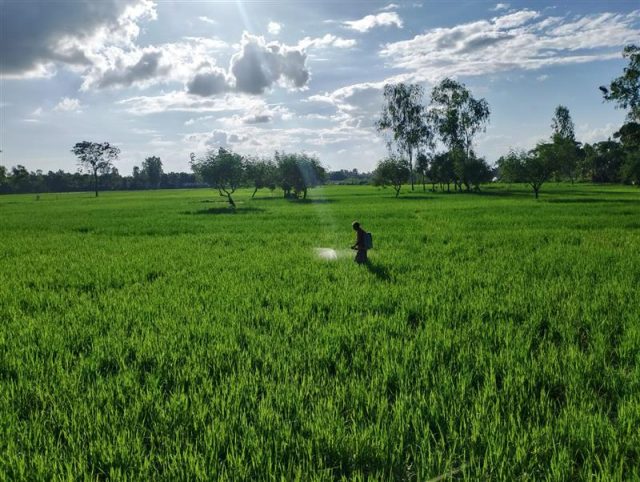Mother of Grains: what millet teaches us about biodiversity
- From
-
Published on
22.05.23
- Impact Area

Hardy, nutritious crops like millets were once commonplace on farms and plates. Research shows that by bringing back these “neglected and underutilized species” to diversify food systems, we can reap benefits ranging from climate resilience to healthier diets.
By: Yosef Gebrehawaryat, Jai Rana, Eliot Gee
Have you met the Poaceae family?
Made up of pearl, foxtail, proso, barnyard, little, kodo, browntop, finger and Guinea millets, plus fonio, sorghum, and teff, this varied group of cereals is the subject of the International Year of Millets. The United Nations’ choice to highlight these grains- technically grasses- is fitting for 2023, when resilience is on the tip of everybody’s tongues. Traditionally appearing in diets from Sub-Saharan Africa to China, millets have long grown in arid or unforgiving landscapes. Besides being cooked as a staple grain useful with any meal, millets have been frequently turned into porridge, bread, and beer.
Yet with the consolidation of contemporary diets around the staples of rice, wheat, and maize, millets have vanished from many parts of the world where they once thrived. Ironically, these crops are being phased out at the precise moment when they are most needed.

India spotlights ‘mother of grains’
The world’s largest producer of millet (over 10 million tons annually) refers to the crop as “Shree Anna”: the mother of all grains. This designation by the Indian government reflects its hope to position the crop as an agent of holistic change, for rural farmers in need of income as well as urban consumers seeking healthier food options.
Related news
-

From Dirt to Decision-Making: Governance and Soil Health Must Go Hand in Hand
Multifunctional Landscapes Science Program26.11.25-
Biodiversity
-
Environmental health
-
Environmental health & biodiversity
In October, the world convened in Des Moines for the 2025 Borlaug Dialogue under the…
Read more -
-

Reinventing Kenya’s Snack Future with Dryland Grains
International Crops Research Institute for the Semi-Arid Tropics (ICRISAT)21.11.25-
Nutrition
-
Poverty reduction, livelihoods & jobs
Faces of Impact - Video Feature Story On a quiet backstreet in Mihango, Kenya, the…
Read more -
-

Cultivating climate-smart rice: How specific cultivars and smarter fertilizing can cut emissions and maintain yield
International Rice Research Institute (IRRI)19.11.25-
Climate adaptation & mitigation
-
Food security
By Bushra Humaira Sadaf A team of researchers from the Bangladesh Rice Research Institute (BRRI), I…
Read more -
